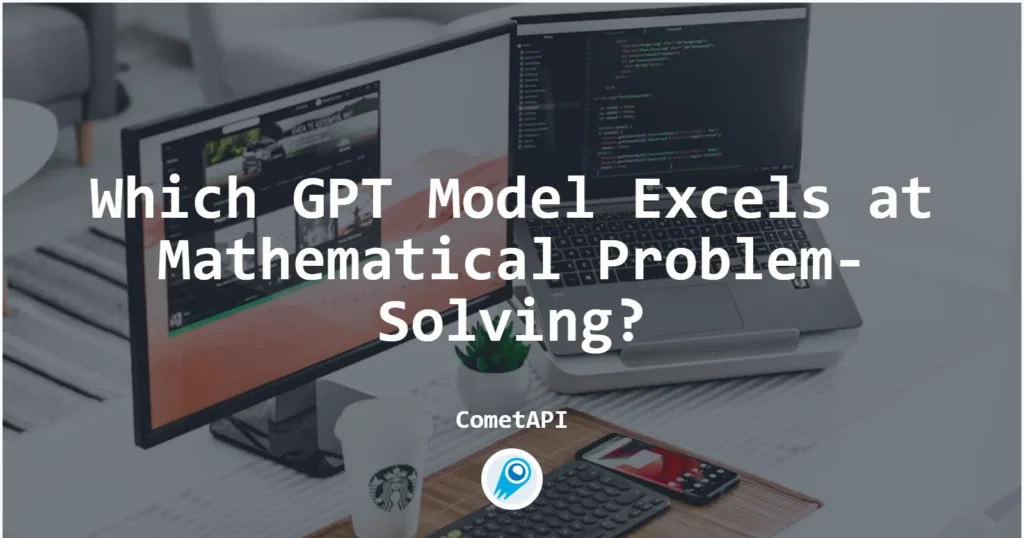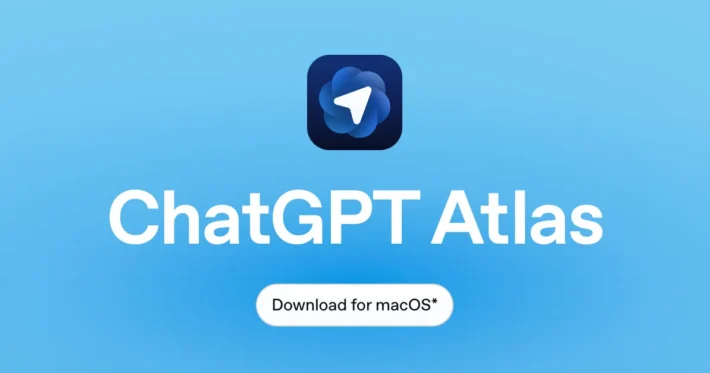Which GPT Model Excels at Mathematical Problem-Solving?

Among its many applications, solving mathematical problems remains one of the most challenging tasks for large language models (LLMs).With multiple generations of GPT models and reasoning-focused “o‑series” models released by OpenAI and competitors, practitioners must decide which model best suits their mathematical needs.
Why Mathematical Performance Matters
Mathematical reasoning is a cornerstone of many applications—ranging from algorithm development and scientific research to education and finance. As organizations and individuals increasingly rely on large language models (LLMs) to automate and assist with complex calculations, deriving proofs, or validating data-driven hypotheses, the precision, efficiency, and reliability of these models become critical. An LLM’s capacity to interpret problem statements correctly, break them into logical substeps, and produce verifiable solutions determines its real-world utility in STEM domains.
A Spectrum of GPT Models: From GPT-3.5 to o4-mini
Since the debut of GPT-3.5, OpenAI’s model lineup has evolved rapidly. GPT-4 marked a significant leap in reasoning and comprehension, followed by specialized variants such as GPT-4 Turbo and GPT-4.5. More recently, OpenAI introduced its “o-series” reasoning models, including o3 and o4-mini, designed specifically to tackle high-level tasks like mathematics, coding, and multimodal analysis. While GPT-4.5 prioritizes broader linguistic finesse and emotion understanding, models in the o-series concentrate on structured reasoning pipelines that emulate human-like, chain-of-thought processing .
How Do the Models Compare on Benchmark Tests?
MATH Benchmark Performance
The MATH dataset, comprising thousands of challenge-level mathematics problems, serves as a rigorous test of an LLM’s capacity for symbolic reasoning and abstraction. GPT-4 Turbo’s April 2024 update, codenamed gpt-4-turbo-2024-04-09, registered nearly a 15 % improvement over its predecessor on the MATH benchmark, reclaiming its top spot on the LMSYS Leaderboard . However, OpenAI’s newly released o3 model has shattered previous records, achieving state‑of‑the‑art scores through optimized chain‑of‑thought reasoning strategies and by leveraging the Code Interpreter tool within its inference pipeline .
GPQA and Other Reasoning Tests
Beyond pure mathematics, the Grade School Physics Question Answering (GPQA) benchmark evaluates an LLM’s ability to handle STEM reasoning more broadly. In OpenAI’s April 2024 tests, GPT-4 Turbo outperformed GPT-4 by 12 % on GPQA questions, demonstrating its enhanced logical inference across scientific domains . Recent evaluations of o3 indicate it surpasses GPT-4 Turbo on the same benchmark by a margin of 6 %, highlighting the o-series’ advanced reasoning architecture.
Real-World Mathematical Applications
Benchmarks provide a controlled environment to measure performance, but real-world tasks often combine disparate skills—mathematical proof, data extraction, code generation, and visualization. GPT-4 Code Interpreter, introduced in mid‑2023, set a new standard by seamlessly converting user queries into runnable Python code, enabling precise computation and graphing for complex word problems . The o-series models, particularly o3 and o4-mini, build upon this by integrating Code Interpreter directly into their chain-of-thought, allowing on-the-fly data manipulation, image reasoning, and dynamic function calls for holistic problem-solving.
What Specialized Features Enhance Math Performance?
Chain-of-Thought and Reasoning Improvements
Traditional LLM prompts focus on generating direct answers, but complex mathematics demands a multi-step rationale. OpenAI’s o-series employs explicit chain-of-thought prompting that guides the model through each logical substep, enhancing transparency and reducing error propagation. This approach, pioneered in the o1 “Strawberry” research prototype, demonstrated that stepwise reasoning yields higher accuracy on algorithmic and mathematical benchmarks, albeit at a slight performance cost per token .
Code Interpreter and Advanced Data Analysis
The Code Interpreter tool remains one of the most impactful innovations for mathematical tasks. By enabling the model to execute sandboxed Python code, it externalizes numerical precision and symbolic manipulation to a trusted execution environment. Early studies showed GPT-4 Code Interpreter achieving new state‑of‑the‑art results on the MATH dataset by programmatically verifying each solution step . With the Responses API update, Code Interpreter functionality is now available to o3 and o4-mini natively, resulting in a 20 % performance uplift on data‑driven math problems when compared to non‑interpreter pipelines .
Multimodal Reasoning with Visual Data
Math problems often include diagrams, plots, or scanned textbook pages. GPT-4 Vision integrated simple visual comprehension, but the o-series significantly advances these capabilities. The o3 model can ingest blurry images, charts, and handwritten notes to extract relevant mathematical information—a feature that proved critical in benchmarks like MMMU (Massive Multitask Multimodal Understanding). The o4-mini offers a compact variant of this functionality, trading off some visual intricacy for faster inference and lower resource consumption .
Which Model Offers the Best Cost-to-Performance Ratio?
API Costs and Speed Considerations
High performance often comes at the expense of increased compute costs and latency. GPT-4.5, while offering improved general reasoning and conversational nuance, carries premium pricing absent of specialized math enhancements and lags behind o-series models on STEM benchmarks. GPT-4 Turbo remains a balanced option—delivering substantial improvements over GPT-4 at roughly 70 % of the cost per token, with response times that meet real‑time interactivity requirements.
Smaller Models: o4-mini and GPT-4 Turbo Trade-offs
For scenarios where budget or latency is paramount—such as high‑volume tutoring platforms or embedded edge applications—the o4-mini model emerges as a compelling choice. It achieves up to 90 % of o3’s mathematical accuracy at approximately 50 % of the compute cost, making it 2–3× more cost‑efficient than GPT-4 Turbo for batch processing of math problems. Conversely, GPT-4 Turbo’s larger context window (128k tokens in the latest variant) may be necessary for extensive multi‑part proofs or collaborative documents, where memory footprint outweighs pure cost metrics.
Enterprise vs. Individual Use Cases
Enterprises tackling mission-critical financial modeling, scientific research, or large‑scale educational deployments may justify the expense of o3 combined with Code Interpreter to guarantee accuracy and traceability. Individual educators or small teams, however, often prioritize affordability and speed—making o4-mini or GPT-4 Turbo the practical defaults. OpenAI’s tiered pricing and rate limits reflect these distinctions, with volume discounts available for annual commitments on higher‑tier models.
Which Model Should You Choose for Your Needs?
For Academic and Research Usage
When every decimal place matters and reproducibility is non‑negotiable, o3 paired with Code Interpreter stands out as the gold standard. Its superior benchmark performance on MATH, GPQA, and MMMU ensures that complex proofs, statistical analyses, and algorithmic validations are handled with the highest fidelity .
For Education and Tutoring
Educational platforms benefit from a blend of accuracy, affordability, and interactivity. o4-mini, with its robust reasoning and visual problem‑solving capabilities, delivers near‑state-of-the-art performance at a fraction of the cost. Additionally, GPT-4 Turbo’s enhanced context window allows it to hold extended dialogues, track student progress, and generate step-by-step explanations across multiple problem sets.
For Enterprise and Production Systems
Enterprises deploying LLMs in production pipelines—such as automated report generation, risk assessment, or R&D support—should weigh the trade-offs between the interpretability of Code Interpreter-enabled models and the throughput advantages of smaller variants. GPT-4 Turbo with a premium context window often serves as a middle path, coupling reliable math performance with enterprise-grade speed and integration flexibility.
Getting Started
CometAPI provides a unified REST interface that aggregates hundreds of AI models—under a consistent endpoint, with built-in API-key management, usage quotas, and billing dashboards. Instead of juggling multiple vendor URLs and credentials.
While waiting, Developers can access O4-Mini API ,O3 API and GPT-4.1 API through CometAPI, the latest models listed are as of the article’s publication date. To begin, explore the model’s capabilities in the Playground and consult the API guide for detailed instructions. Before accessing, please make sure you have logged in to CometAPI and obtained the API key. CometAPI offer a price far lower than the official price to help you integrate.
Conclusion:
Choosing the “best” GPT model for mathematical tasks ultimately depends on the specific requirements of the project. For uncompromising accuracy and advanced multimodal reasoning, o3 with built-in Code Interpreter is unmatched. If cost efficiency and latency are primary constraints, o4-mini provides exceptional mathematical prowess at a lower price point. GPT-4 Turbo remains a versatile workhorse, offering substantial improvements over GPT-4 while maintaining broader general-purpose capabilities. As OpenAI continues to iterate—culminating in the forthcoming GPT-5 that will likely synthesize these strengths—the landscape for AI-driven mathematics will only grow richer and more nuanced.



